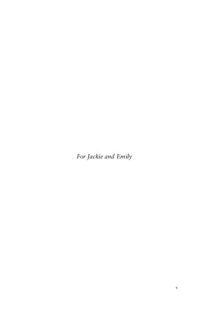
Ebook: Beckett’s Creatures: Art of Failure after the Holocaust
Author: Joseph Anderton
- Year: 2016
- Publisher: Bloomsbury Methuen Drama
- Language: English
- pdf
In the shadow of the Holocaust, Samuel Beckett captures humanity in ruins through his debased beings and a decomposing mode of writing that strives to ‘fail better’. But what might it mean to be a ‘creature’ or ‘creaturely’ in Beckett's world? In the first full-length study of the concept of the creature in Beckett's prose and drama, this book traces the suspended lives and melancholic existences of Beckett's ignorant and impotent creatures to assess the extent to which political value marks the divide between human and inhuman.
Through close readings of Beckett's prose and drama, particularly texts from the middle period, includingMolloy, Malone Dies, The Unnamable, Waiting for Godot and Endgame, Anderton explicates four arenas of creaturely life in Beckett. Each chapter attends to a particular theme – testimony, power, humour and survival – to analyse a range of pressures and impositions that precipitate the creaturely state of suspension.
Drawing on the writings of Adorno, Agamben, Benjamin, Deleuze and Derrida to explore the overlaps between artistic and political structures of creation, the creature emerges as an in-between figure that bespeaks the provisional nature of the human. The result is a provocative examination of the indirect relationship between art and history through Beckett's treatment of testimony, power, humour and survival, which each attest to the destabilisation of meaning after Auschwitz.
The Beckettian creature is a product of dehumanization and endures a variety of irresolvable tensions that culminate in a contingent mode of being that subsists in the nostalgia or hope for an authentic, meaningful life. This book examines Samuel Beckett’s evocation of the ‘creature’ as an ontological concept to make the case for the oblique historical and political significance of his artistic forms. It traces the aesthetic, biopolitical and humanistic resonance of the creature to contribute new ways of analysing Beckett’s ‘art of failure’ in the post-Holocaust context. Through close readings of Beckett’s prose and drama, particularly texts from the middle period, including Molloy, Malone Dies, The Unnamable, Waiting for Godot and Endgame, I explicate four arenas of creaturely life in Beckett. Each chapter attends to a particular theme – testimony, power, humour and survival – to analyse a range of pressures and impositions that precipitate the creaturely state of suspension. Drawing on the philosophical and theoretical writings of Theodor Adorno, Giorgio Agamben, Walter Benjamin, Gilles Deleuze and Jacques Derrida, this study relates Beckett’s creatures to a framework of theory that addresses the human condition and the status of art in the second half of the twentieth century. The key findings are that Beckett’s creatures traverse the edge of a bare life devoid of meaning, but live on through the debased idea of the human as they negotiate pressing obligations and melancholic repetition compulsions. Beckett invents author-narrators and narrative modes replete with epistemological and expressive failures, which act as an appropriate aesthetic response and pertinent reflection of the destabilized human after the Holocaust. As such, Beckett conveys the anti-humanist vision that attends the perverse or ineffective performance of humanist assumptions.
Through close readings of Beckett's prose and drama, particularly texts from the middle period, includingMolloy, Malone Dies, The Unnamable, Waiting for Godot and Endgame, Anderton explicates four arenas of creaturely life in Beckett. Each chapter attends to a particular theme – testimony, power, humour and survival – to analyse a range of pressures and impositions that precipitate the creaturely state of suspension.
Drawing on the writings of Adorno, Agamben, Benjamin, Deleuze and Derrida to explore the overlaps between artistic and political structures of creation, the creature emerges as an in-between figure that bespeaks the provisional nature of the human. The result is a provocative examination of the indirect relationship between art and history through Beckett's treatment of testimony, power, humour and survival, which each attest to the destabilisation of meaning after Auschwitz.
The Beckettian creature is a product of dehumanization and endures a variety of irresolvable tensions that culminate in a contingent mode of being that subsists in the nostalgia or hope for an authentic, meaningful life. This book examines Samuel Beckett’s evocation of the ‘creature’ as an ontological concept to make the case for the oblique historical and political significance of his artistic forms. It traces the aesthetic, biopolitical and humanistic resonance of the creature to contribute new ways of analysing Beckett’s ‘art of failure’ in the post-Holocaust context. Through close readings of Beckett’s prose and drama, particularly texts from the middle period, including Molloy, Malone Dies, The Unnamable, Waiting for Godot and Endgame, I explicate four arenas of creaturely life in Beckett. Each chapter attends to a particular theme – testimony, power, humour and survival – to analyse a range of pressures and impositions that precipitate the creaturely state of suspension. Drawing on the philosophical and theoretical writings of Theodor Adorno, Giorgio Agamben, Walter Benjamin, Gilles Deleuze and Jacques Derrida, this study relates Beckett’s creatures to a framework of theory that addresses the human condition and the status of art in the second half of the twentieth century. The key findings are that Beckett’s creatures traverse the edge of a bare life devoid of meaning, but live on through the debased idea of the human as they negotiate pressing obligations and melancholic repetition compulsions. Beckett invents author-narrators and narrative modes replete with epistemological and expressive failures, which act as an appropriate aesthetic response and pertinent reflection of the destabilized human after the Holocaust. As such, Beckett conveys the anti-humanist vision that attends the perverse or ineffective performance of humanist assumptions.
Download the book Beckett’s Creatures: Art of Failure after the Holocaust for free or read online
Continue reading on any device:

Last viewed books
Related books
{related-news}
Comments (0)